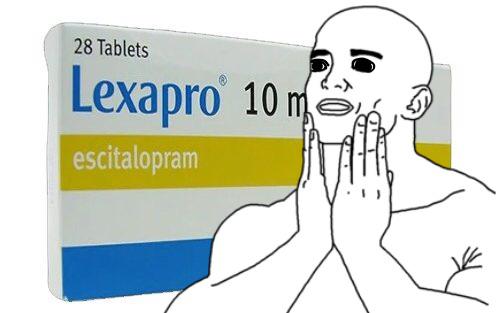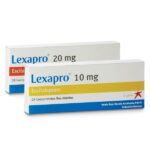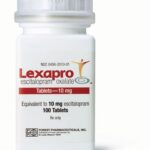What Is The Best Time To Take Lexapro For Anxiety?

What does it mean to have anxiety?
According to the American Psychological Association (APA), anxiety is an emotion characterized by feelings of tension, worried thoughts, and physical changes like increased blood pressure. Knowing the difference between normal feelings of anxiety and an anxiety disorder requiring medical attention can help a person identify and treat the condition.
The duration or severity of an anxious feeling can sometimes be out of proportion to the original trigger, or stressor. Physical symptoms, such as increased blood pressure and nausea, may also develop. These responses move beyond anxiety into an anxiety disorder.
The APA describes a person with anxiety disorder as “having recurring intrusive thoughts or concerns.” Once anxiety reaches the stage of a disorder, it can interfere with daily function.
While a number of different diagnoses constitute anxiety disorders, the symptoms of a generalized anxiety disorder (GAD) will often include the following:
• restlessness, and a feeling of being “on-edge”
• uncontrollable feelings of worry
• increased irritability
• concentration difficulties
• sleep difficulties, such as problems in falling or staying asleep
While these symptoms might be normal to experience in daily life, people with GAD will experience them to persistent or extreme levels. GAD may present as vague, unsettling worry or more severe anxiety that disrupts day-to-day living.
What is Lexapro?
Lexapro is a brand of escitalopram, an antidepressant medication that works in the brain. It is approved for the treatment of major depressive disorder (MDD) and generalized anxiety disorder (GAD). It works by helping to restore the balance of a certain natural substance (serotonin) in the brain. Escitalopram belongs to a class of drugs known as selective serotonin reuptake inhibitors (SSRI).
Lexapro may also be helpful when prescribed “off-label” for obsessive compulsive disorder (OCD), eating disorders such as binge eating disorder or bulimia nervosa, panic disorder, posttraumatic stress disorder (PTSD), and premenstrual dysphoric disorder (PMDD). “Off-label” means that it hasn’t been approved by the Food and Drug Administration for this condition. Your mental health provider should justify his or her thinking in recommending an “off-label” treatment. They should be clear about the limits of the research around that medication and if there are any other options.
How effective is Lexapro for anxiety?
Clinical data indicates that Lexapro is an effective and well-tolerated first-line treatment option for the management of social anxiety and generalized anxiety disorder.
What is the best time to take Lexapro for anxiety?
Take Lexapro exactly as your doctor tells you, and follow the directions on the label. If you’re not sure, check with your pharmacist or doctor.
Dosage and strength
Lexapro tablets come in different strengths ranging from 5mg to 20mg.
The usual dose of Lexapro is 10mg a day. But your doctor may start you on a lower dose and increase it to a maximum dose of 20mg a day.
If you have liver problems, the maximum recommended dose is 10mg a day.
With liquid drops, 1 drop is equivalent to 1mg of escitalopram, 10 drops are 10mg, and 20 drops is 20mg.
How to take it
Take Lexapro once a day. You can take it with or without food.
You can take Lexapro at any time of day, as long as you stick to the same time every day. If you have trouble sleeping, it’s best to take Lexapro in the morning.
How long to take it for
Once you’re feeling better, it’s likely that you’ll keep taking Lexapro for several more months to prevent the symptoms from returning. The decision to stop your treatment or carry on will depend on what symptoms you have and how serious they are. It will also depend on whether it’s a one-off problem or one that keeps coming back, how well Lexapro works for you, and whether you have had any bad side effects.
If you forget to take it
If you forget to take a dose and remember before you go to bed, take it straight away. Carry on, as usual, the next day.
If you only remember during the night or the next day, leave out the missed dose and carry on as usual.
Do not take a double dose to make up for forgotten doses.
If you forget doses often, it may help to set an alarm to remind you. You could also ask your pharmacist for advice on other ways to help you remember to take your medicine.
Stopping Lexapro
If you have been feeling better for 6 months or more, your doctor may suggest coming off Lexapro.
Your doctor will probably recommend reducing your dose gradually over several weeks, or longer if you have been taking Lexapro for a long time.
This is to help prevent any withdrawal side effects you might get as a reaction to coming off the medicine. These can include:
• dizziness
• feeling sick
• numbness or tingling in the hands or feet
• trouble sleeping
• feeling agitated or anxious
• headaches
• shaking
Lexapro is not approved for use by anyone younger than 12 years old. Ask your doctor about taking this medicine if you are pregnant. Taking an SSRI antidepressant during late pregnancy may cause serious medical complications in the baby. However, you may have a relapse of depression if you stop taking your antidepressant. Tell your doctor right away if you become pregnant
Do not use Lexapro within 14 days before or 14 days after you have used an MAO inhibitor. A dangerous drug interaction could occur. MAO inhibitors include isocarboxazid, linezolid, phenelzine, rasagiline, selegiline, and tranylcypromine.




